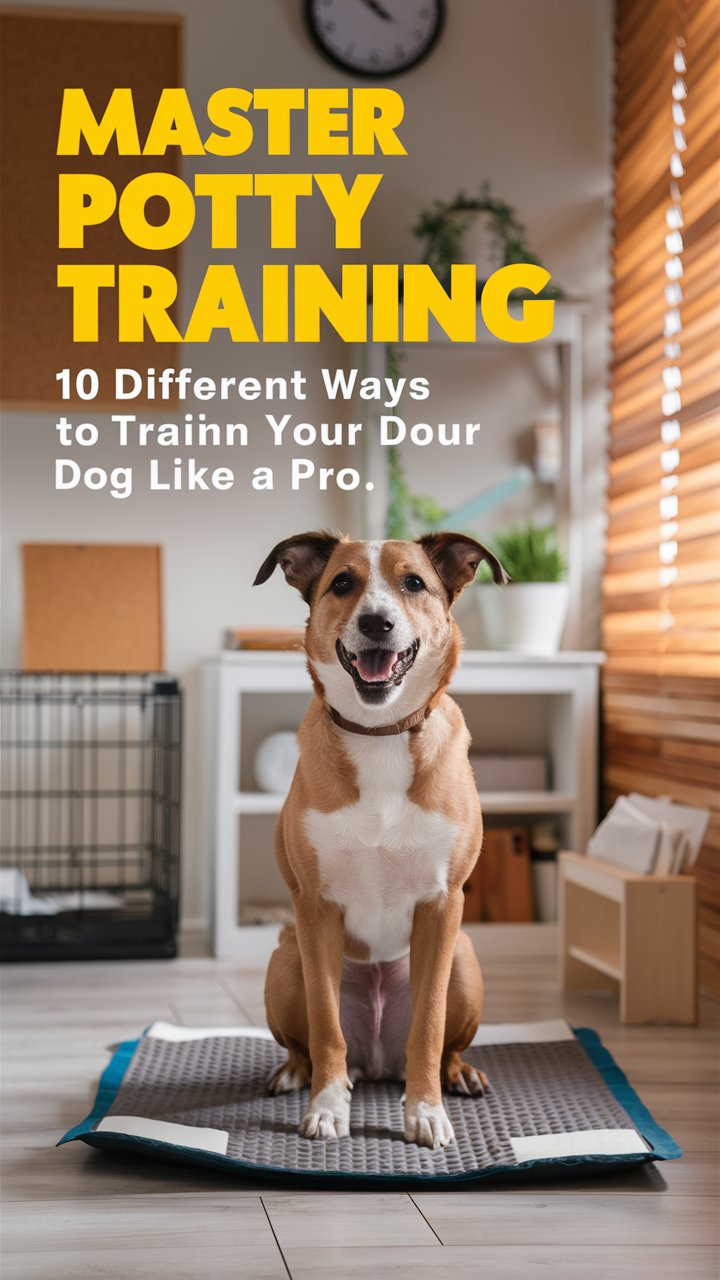Potty training a dog can feel overwhelming—like living with a furry toddler who doesn’t understand bathroom rules. Your carpets, floors, and sanity might already be suffering. But here’s the good news: potty training doesn’t have to be stressful.
With patience, consistency, and the right strategies, you can train your dog to go outside (and only outside). Whether you have a brand-new puppy or an older rescue, these 10 proven potty training tips will save your home—and your peace of mind.
⭐ Key Takeaways
- Dogs thrive on routine—set a schedule and stick to it.
- Positive reinforcement works better than punishment.
- Supervision, patience, and consistency are your best tools.
1. Stick to a Schedule (Dogs Love Routine)
Dogs are creatures of habit. Taking them out first thing in the morning, after meals, naps, playtime, and before bed builds consistency.
👉 Example potty schedule:
- Morning wake-up → Immediate potty break
- After meals → Within 15–20 minutes
- Evening → Before bedtime
Pro Tip: Keep meal times consistent. A regular feeding schedule = regular potty schedule.
2. Supervise Closely (Prevent Accidents Before They Happen)
Think of your dog like a toddler—you can’t leave them unsupervised. If you spot sniffing, circling, or heading toward a corner → immediately take them outside.
Can’t supervise? Use a crate or a playpen. Dogs naturally avoid going where they sleep. Just remember: don’t leave them crated for too long.
3. Reward Success Immediately (Positive Reinforcement)
When your dog goes potty in the right spot → celebrate big time! Treats, praise, and love help them connect the behavior with rewards.
⚡ Timing matters: reward immediately after they finish outside.
4. Expect Accidents (Stay Calm & Don’t Punish)
Accidents are part of the process. If you catch your dog mid-act → interrupt calmly and rush them outside. If they finish outdoors → reward.
❌ Never rub their nose in it or yell—it only creates fear, not learning.
✅ Use enzymatic cleaners to remove odors so they don’t reuse the same spot.
5. Introduce a Cue Word (Train on Command)
Choose a phrase like “Go potty” or “Do your business.” Repeat it only when they’re actually going, not before. Eventually, your dog will associate the word with the action—super handy on rainy days!
6. Be Consistent (Rome Wasn’t Built in a Day)
Some dogs learn fast, others take weeks or months. Stay consistent with routines, commands, and rewards. Consistency = faster results.
7. Nighttime Potty Training
Puppies under 6 months often need a midnight potty break. Keep it quiet and boring—don’t turn it into playtime. Take them out, let them go, reward calmly, and head back to bed.
8. Apartment & City Potty Training
Not everyone has a backyard. If you live in an apartment:
- Take your dog out more frequently.
- Consider a balcony potty patch or artificial grass.
- Avoid long reliance on pee pads (they can confuse dogs).
9. Common Mistakes to Avoid 🚫
- Inconsistent feeding times → leads to unpredictable potty breaks.
- Punishing accidents → creates fear, not learning.
- Skipping night breaks for young puppies → almost guarantees accidents.
- Not cleaning properly → lingering smells = repeat accidents.
10. Seek Professional Help if Needed
If months pass and accidents continue, consult a vet (to rule out health issues) or a certified dog trainer. Some dogs need extra guidance.
🐾 Bonus: Dog Potty Training Tools That Help
- 🏠 Crates → Encourage holding it in
- 🧴 Enzymatic Cleaners → Eliminate odors
- 🐶 Training Bells → Let your pup “ring” when they need to go out
- 🌿 Indoor Potty Grass → Great for apartments
FAQs About Dog Potty Training
Q: How long does potty training take?
A: On average, 2–6 months. Puppies and smaller breeds may take longer.
Q: Should I use pee pads?
A: Only if absolutely necessary. Pee pads can delay outdoor training.
Q: My older dog still has accidents—why?
A: Could be medical (UTI, incontinence). Always consult a vet if accidents persist.
Final Thoughts: Patience Pays Off 🐕
Potty training isn’t about perfection—it’s about progress. With patience, consistency, and positive reinforcement, your pup will learn. Accidents will happen, but they’re just part of the journey.
👉 Stick to your schedule, supervise, reward, and stay calm. In time, you’ll have a dog that knows exactly where to go—outside where it belongs.
